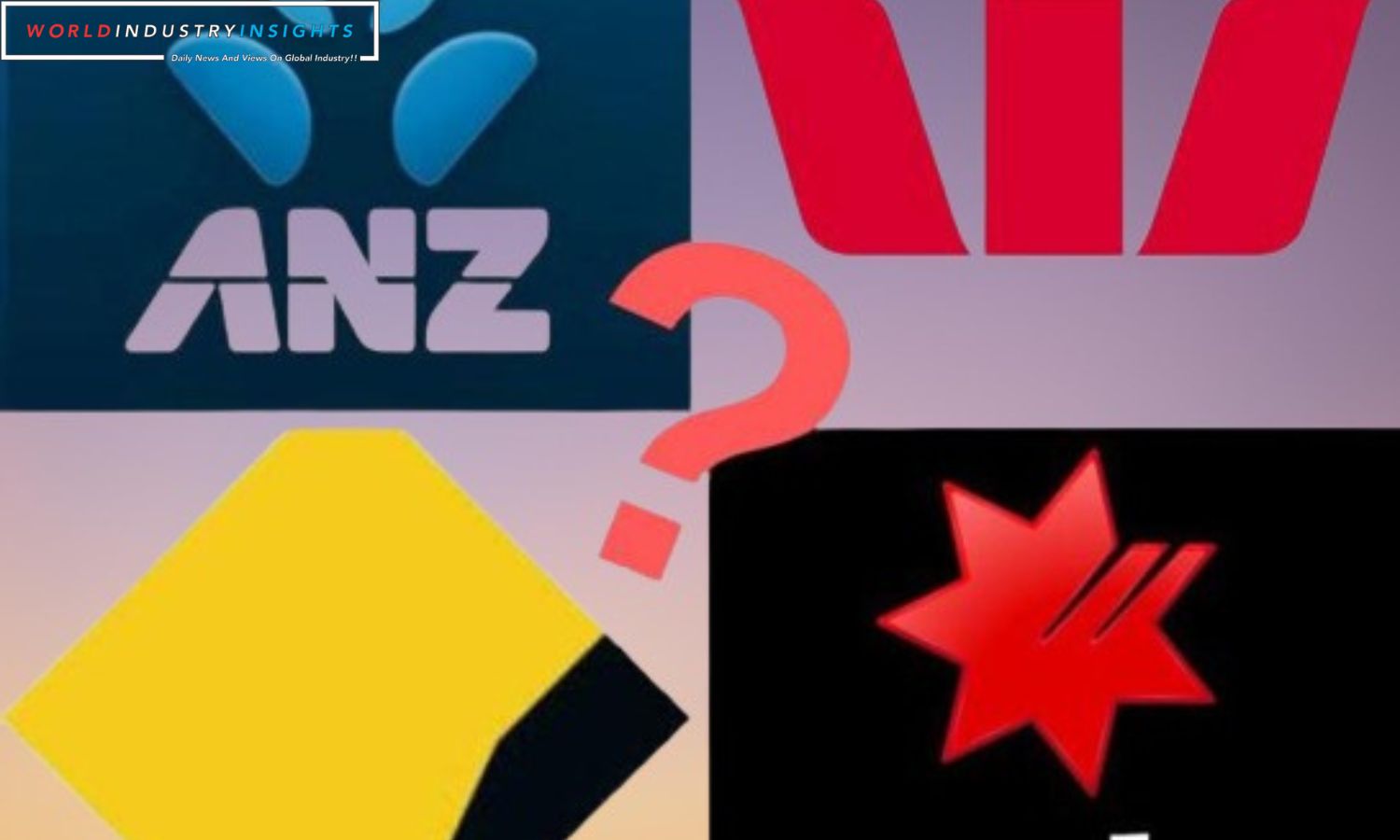Australia Big Four Banks Unite: Australia’s largest bank, the Commonwealth Bank (CBA.AX), has raised its variable home loan rates by 25 basis points with the other three main banks. The RBA boosted its interest rate this week, provoking this synchronized response.
The National Australia Bank (NAB.AX), ANZ Group Holdings (ANZ.AX), and Westpac Banking Corp (WBC.AX) had already raised their home loan rates by 0.25%.
The RBA’s move, elevating its cash rate by 25 basis points to 4.35%, marked the end of a four-month period of steadfast policy, fueled by recent data suggesting a lingering threat of prolonged inflation.
NAB and ANZ were quick off the mark in implementing their rate hikes, which are set to come into effect from November 17. Meanwhile, Westpac Banking Corp has slated its rate increase to kick in from November 21. In line with NAB and ANZ, the Commonwealth Bank of Australia has opted for a November 17 start date for its home loan variable rate adjustment.
This coordinated response sends a powerful message about the unity and alignment of Australia’s banking heavyweights in adapting to changing economic dynamics and concerns about inflation. It underscores the intricate interplay between the monetary policy decisions of the central bank and the subsequent actions taken within the country’s banking sector.
Also Read: Technical Glitch Rattles Top Banks: What Really Happened?
As the Reserve Bank of Australia proactively manages inflation risks, these major banks are ensuring their rates remain in sync with the evolving financial landscape, offering flexibility to borrowers and savers. This harmonious effort underscores the flexibility and adaptability of Australia’s financial institutions in responding to evolving economic dynamics.
It’s crucial to recognize the pivotal role of the banking industry in shaping Australia’s financial landscape. In taking proactive measures to address inflationary risks, these big four banks are playing a crucial part in maintaining financial stability and resilience in the face of economic uncertainties.
In summary, the synchronized rate hike by Australia’s major banks not only mirrors the central bank’s monetary stance but also highlights the nimbleness and unity of these financial giants in safeguarding the nation’s economic well-being. Their well-coordinated efforts demonstrate their commitment to maintaining financial equilibrium amid challenging economic conditions.
Australia’s banking sector continues to be a linchpin in the country’s financial stability, showcasing its capacity to adapt and respond to evolving economic realities. With these major players taking a collective step, it remains to be seen how this synchronized effort will impact the nation’s financial landscape in the coming months.
Our Reader’s Queries
Who are the Big 4 banks in Australia?
Australia’s banking industry is dominated by the ‘big four’ banks, namely ANZ, Commonwealth Bank, NAB, and Westpac. These leading banks, with their impressive assets, have been at the forefront of the country’s financial sector for years.
What is the strongest bank in Australia?
In the 2023 financial year, the Commonwealth Bank of Australia emerged as the largest bank in Australia in terms of total assets. With over 1,252 billion Australian dollars in assets, the bank has established itself as a major player in the financial industry.
What are Tier 1 banks in Australia?
The four largest banks in Australia, commonly known as the “Big Four,” are ranked based on their market capitalization in 2017. The Commonwealth Bank (CBA) takes the top spot with a market capitalization of A$139.219 billion, followed by Westpac at A$106.821 billion, Australia & New Zealand Banking Group (ANZ) at A$83.599 billion, and National Australia Bank (NAB) at A$79.465 billion. These banks are major players in the Australian financial industry and have a significant impact on the country’s economy.
What are the big 4 national banks?
JPMorgan Chase leads the pack with a whopping $3.31 trillion in assets, followed by Bank of America with $2.41 trillion and Citigroup with $1.714 trillion. Wells Fargo & Co. and U.S. Bancorp round out the top five with $1.712 trillion and $591.21 billion in assets, respectively. PNC Financial Services and Truist Financial Corporation also make the list with $553.39 billion and $534.19 billion in assets, respectively. Goldman Sachs comes in at number eight with $513.91 billion in assets.


